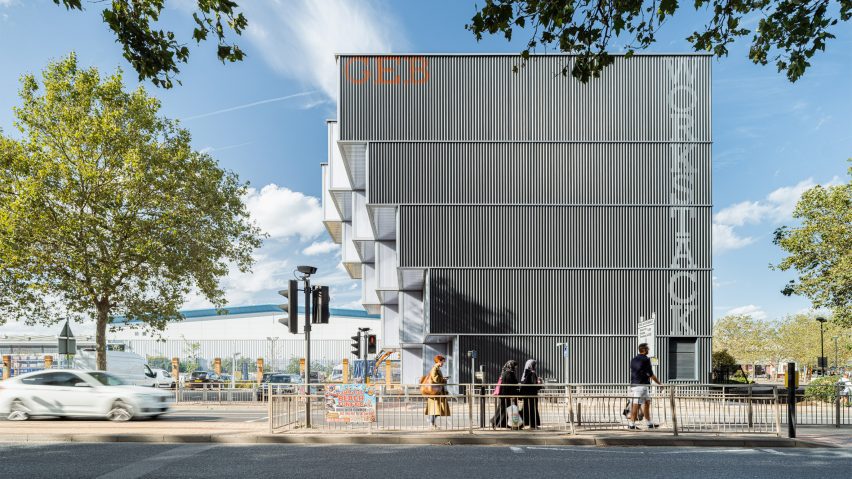
Stacks of timber inform "inspirational" industrial units by dRMM
London studio dRMM has completed WorkStack, a top-heavy stack of industrial units in Greenwich that is constructed from cross-laminated timber.
Designed for the Greenwich Enterprise Board and backed by the Greater London Authority, the building is intended as a model for high-density, affordable industrial space on compact sites, which challenges traditional "ugly, cold metal sheds", dRMM said.
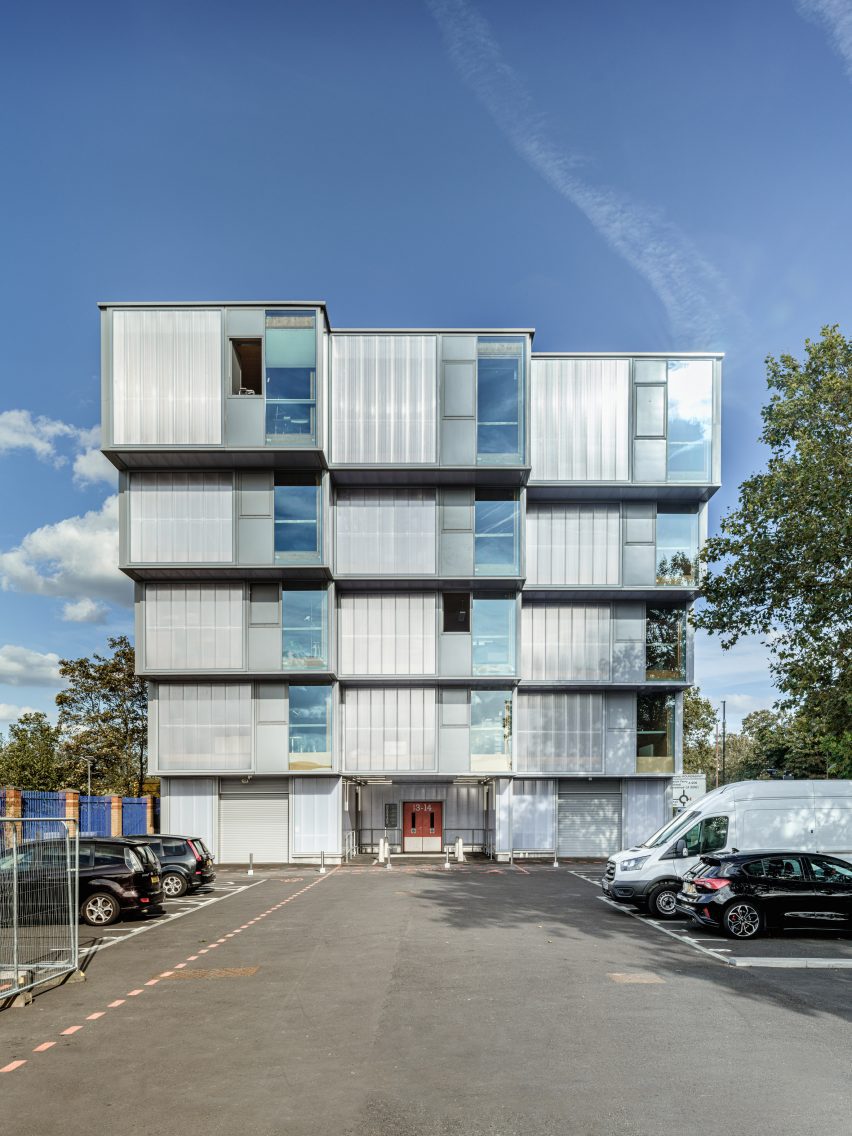
"The project was deliberately designed as a model to address the problem of makers being pushed out of urban centres because of residential development," said dRMM co-founder Alex de Rijke.
"It also gives a powerful message that light industrial can mean socially and environmentally inspirational," he told Dezeen.
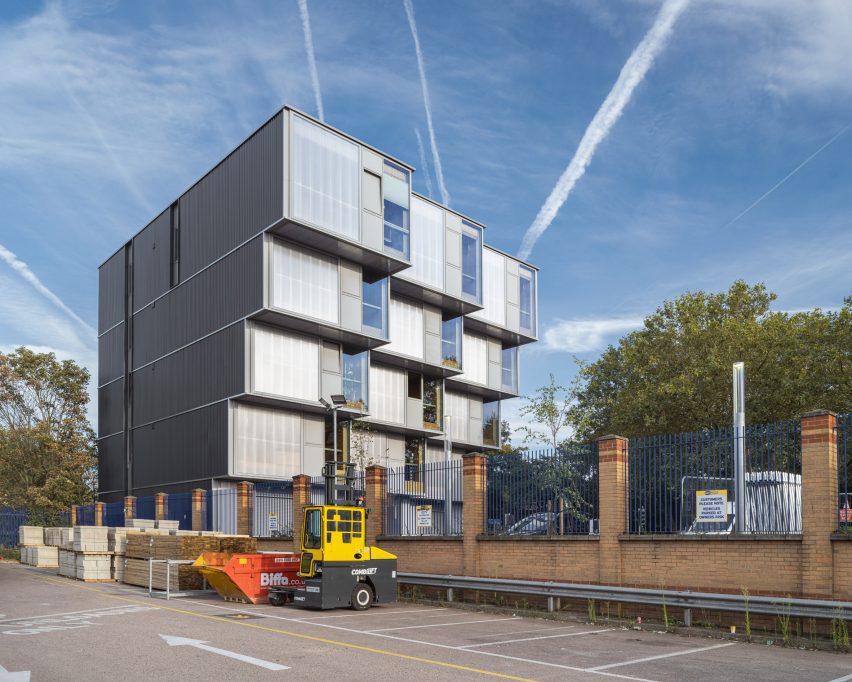
The stepped form of WorkStack, which references stacks of cut timber, is designed to fit 14 units on the site. This top-heavy design also provides cover for a central loading bay.
Access is provided by lifts and a staircase at the rear of the building alongside a plant room. Inside, current occupants include furniture makers, knitwear producers and a motorcycle workshop.
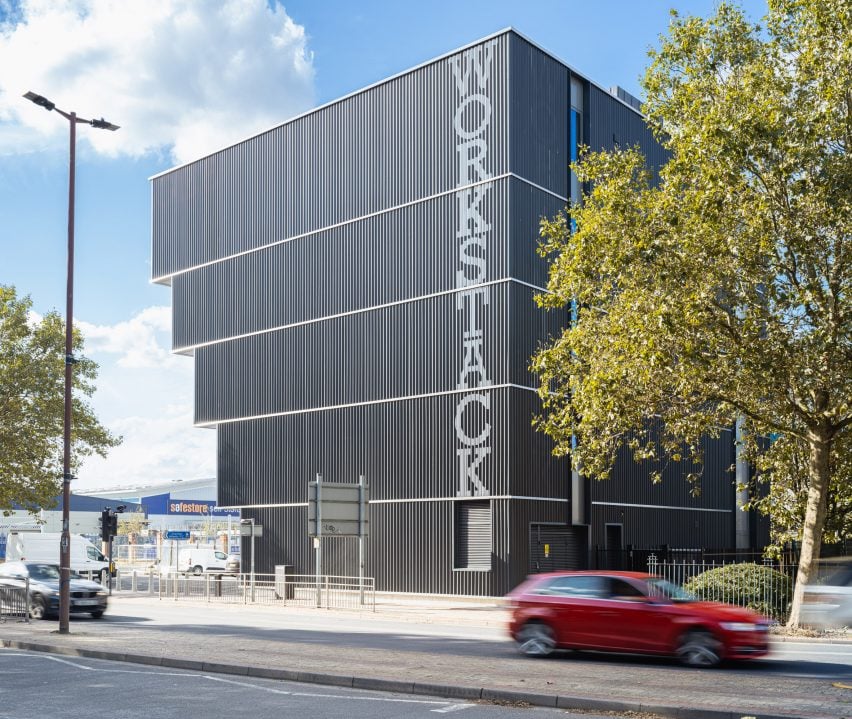
"Freshly cut timber, when stacked outside in order to ventilate and dry it, often includes an overhang to keep the water off," de Rijke told Dezeen.
"WorkStack's cantilevered form is derived not only from this but also the need to provide high density on a small site," he continued. "By stepping out progressively we could provide the client with the mix of workshop sizes they needed, integral solar shading and a covered delivery bay."
Cross-laminated timber was chosen for the structure to minimise construction time and material waste. It is left exposed throughout to eliminate the need for additional finishes.
Each unit provides workspace for approximately 60 people, facing out towards the car park through full-height windows and panels of translucent polycarbonate.
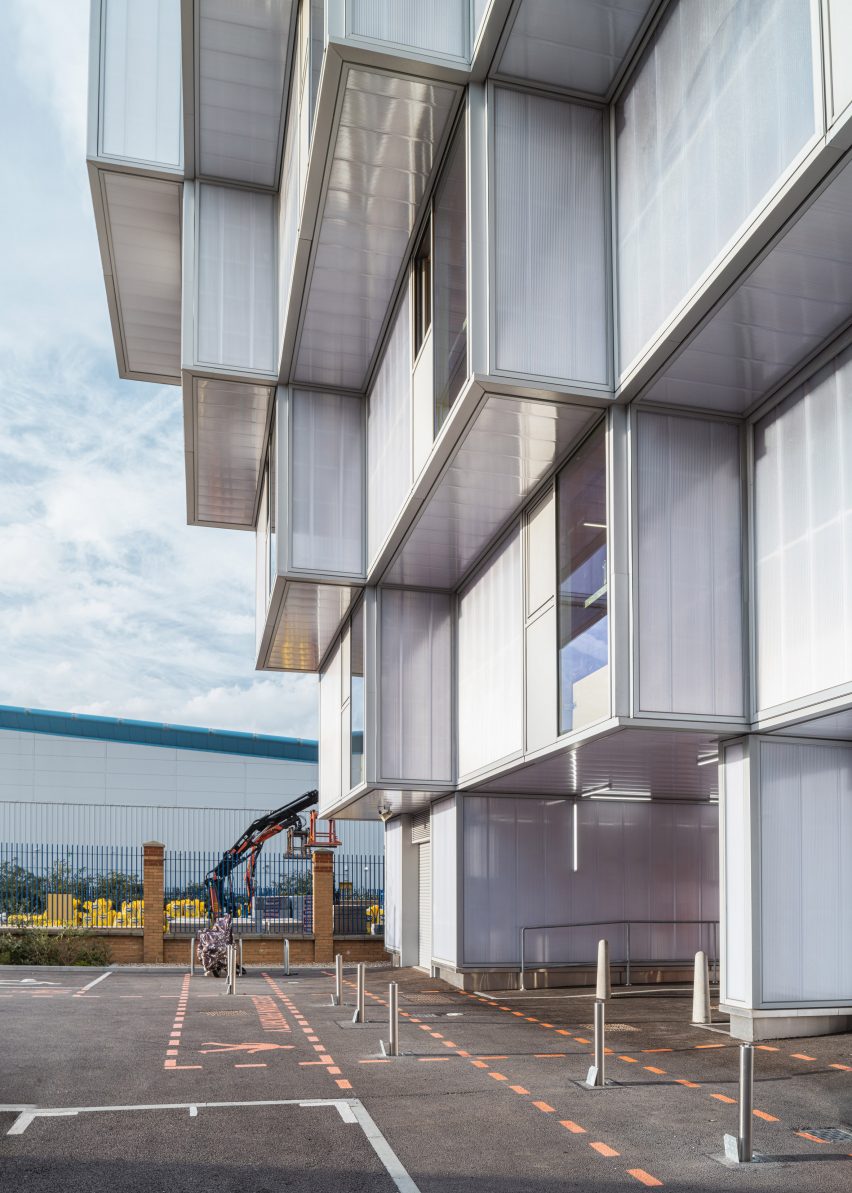
"[WorkStack] equates to a density of roughly 428 employees per hectare, compared to the London industrial average of 69 employees per hectare," said the studio.
Externally, corrugated-metal cladding references the appearance of more traditional industrial sheds, with "WorkStack" emblazoned vertically down one side.
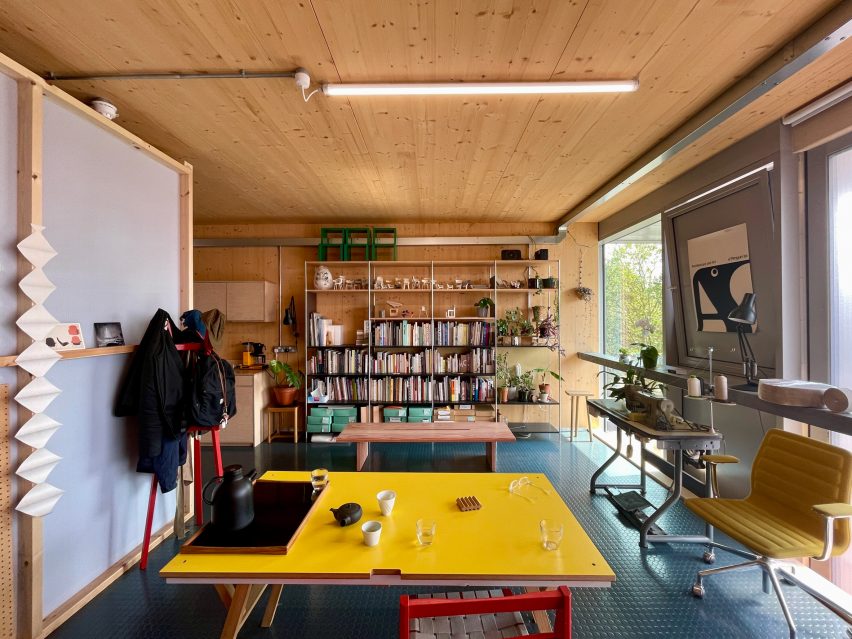
"[It is] an engineered mass timber structure with limited steel, polycarbonate, glass and rubber introduced only where function or regulation demanded," said dRMM.
Another cross-laminated timber building designed by dRMM is Maggie's Centre in Oldham, which aims to emphasise the "hope and warmth" of wood as a material.
Elsewhere, Haworth Tompkins also recently completed a multi-storey industrial building. Named Industria, it is made up of two checkerboard-patterned wings.
The photography is by Fred Howarth unless stated.